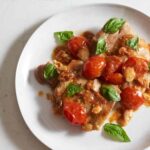Imagine a world where everyone can enjoy the delightful sweetness of a perfectly baked cupcake, regardless of dietary restrictions. This is the promise of our egg-free cupcake recipes, designed to be the star of any gathering. From fluffy, tender bases crafted with applesauce, mashed banana, or flaxseed, to decadent frostings in a rainbow of flavors, these cupcakes are a testament to the power of delicious innovation. We’ll guide you through creating a variety of textures and tastes, catering to diverse preferences and dietary needs, ensuring your cupcakes are not only visually stunning but also allergy-friendly and utterly irresistible.
This guide dives deep into the art of egg-free baking, providing detailed recipes, frosting ideas, decorating techniques, and essential troubleshooting tips. We’ll explore various allergen considerations, offering substitutions for common culprits like gluten and dairy. Learn how to achieve the perfect texture and moisture, mastering the nuances of egg-free baking to create cupcakes that are as impressive as they are delicious. Get ready to transform your next party into a cupcake extravaganza!
Dietary Considerations and Allergen Information

Creating delicious and inclusive egg-free cupcakes requires careful consideration of potential allergens beyond eggs. Many common cupcake ingredients can trigger reactions in individuals with various dietary restrictions. This section details common allergens and offers substitutions to ensure your egg-free cupcakes are enjoyable for everyone.
Common Allergens and Substitutions
Many ingredients used in baking can be sources of allergic reactions. Understanding these potential allergens and their suitable replacements is crucial for creating inclusive recipes. The following table summarizes common allergens and their suggested substitutions in egg-free cupcake recipes. Remember always to carefully read ingredient labels to ensure products are free from potential cross-contamination.
| Allergen | Substitution |
|---|---|
| Dairy (Milk, Whey, Casein) | Dairy-free milk alternatives (almond, soy, oat, coconut), applesauce, or vegan butter. Note that some vegan butters may contain soy or other allergens. Always check labels carefully. |
| Gluten (Wheat, Barley, Rye) | Gluten-free all-purpose flour blends (ensure they contain xanthan gum or guar gum for binding), almond flour, or coconut flour. Adjust liquid amounts as gluten-free flours absorb differently. |
| Soy | Other plant-based milks (like oat or almond milk), sunflower seed butter, or tahini. Carefully check labels to avoid soy lecithin or other soy-derived ingredients. |
| Tree Nuts (Almonds, Walnuts, Pecans, etc.) | Sunflower seeds, pumpkin seeds, or other nut-free seed butters. Always be mindful of cross-contamination in shared preparation spaces. |
| Peanuts | Sunflower seed butter or tahini. Strict cross-contamination avoidance is crucial when handling peanuts. |
Adapting Recipes for Gluten-Free and Dairy-Free Diets
Adapting egg-free cupcake recipes to accommodate gluten-free and dairy-free diets requires careful substitution and process adjustments. For gluten-free baking, replacing wheat flour with a gluten-free blend is essential. These blends often include xanthan gum or guar gum to mimic the binding properties of gluten, ensuring the cupcakes maintain their structure. However, gluten-free flours absorb liquids differently, often requiring adjustments to the liquid content of the recipe. Experimentation may be needed to achieve the desired consistency.
For dairy-free cupcakes, substitute dairy milk with a plant-based alternative like almond, soy, oat, or coconut milk. Vegan butter can replace regular butter, though again, careful label reading is crucial to avoid hidden allergens. Some recipes might also benefit from adding applesauce or mashed banana for extra moisture and binding. The texture of dairy-free cupcakes might differ slightly from those made with dairy, but the flavour remains delightful.
Baking Tips and Troubleshooting
Baking egg-free cupcakes successfully requires attention to detail and a few key techniques. Understanding the role eggs play in traditional baking—binding, leavening, and adding moisture—is crucial to adapting recipes effectively. These tips will help you achieve light, fluffy, and delicious egg-free cupcakes every time.
Essential Tips for Egg-Free Cupcake Success
The absence of eggs necessitates careful consideration of texture and moisture. These five tips will help ensure your egg-free cupcakes rise beautifully and maintain a pleasing consistency.
- Use the Right Binding Agents: Eggs provide structure. Replace them with a combination of applesauce, mashed banana, or silken tofu for moisture and binding. Flaxseed meal or chia seeds mixed with water create a gel-like consistency, mimicking egg whites’ binding properties. The ratios depend on the recipe, but generally, 1 tablespoon of flaxseed meal or chia seeds mixed with 3 tablespoons of water can replace one egg.
- Don’t Overmix the Batter: Overmixing develops gluten, leading to tough cupcakes. Mix until just combined; a few lumps are acceptable. The batter should be smooth but not overly aerated.
- Employ Proper Leavening Agents: Eggs contribute to leavening. Ensure your recipe includes sufficient baking powder and baking soda for a light and airy texture. Check expiration dates to ensure they’re still effective.
- Maintain Consistent Oven Temperature: Preheating the oven to the correct temperature is paramount. Use an oven thermometer to verify the accuracy of your oven’s temperature gauge. Fluctuations can lead to uneven baking and poor results.
- Use Room Temperature Ingredients: Room temperature ingredients blend more easily, creating a smoother batter that bakes more evenly. This is especially important for fats like oil or melted butter.
Common Problems and Troubleshooting Solutions
Even with careful preparation, challenges can arise. Here are three common issues and their solutions.
- Dry Cupcakes: Dry cupcakes often result from insufficient moisture. Increase the amount of applesauce or other moistening agents in the recipe by a tablespoon or two. You can also add a small amount of milk or yogurt to the batter for extra moisture. Alternatively, consider adding a simple glaze or frosting after baking to add moisture and flavor.
- Flat Cupcakes: Flat cupcakes usually indicate insufficient leavening. Double-check the expiration dates of your baking powder and baking soda. Ensure you’ve properly measured these ingredients, as inaccurate measurements can drastically affect the rise. Consider adding a teaspoon of extra baking powder, but avoid overdoing it.
- Crumbly Cupcakes: Crumbly cupcakes often indicate an imbalance of wet and dry ingredients or overmixing. Check your recipe ratios carefully, ensuring the correct proportions of wet and dry ingredients. If the problem persists, try adding a tablespoon or two of milk or yogurt to increase the moisture content and bind the crumbs. Gently fold in any additions to avoid overmixing.
Importance of Proper Measuring Techniques and Oven Temperature
Accurate measuring and consistent oven temperature are fundamental to baking success. Using a kitchen scale for dry ingredients ensures consistent results, as volume measurements can vary. For liquid ingredients, use liquid measuring cups, filling them to the designated line. A reliable oven thermometer is essential to ensure your oven is at the correct temperature, preventing uneven baking and ensuring perfectly risen cupcakes. Preheating the oven thoroughly before placing the cupcakes inside is crucial. Baking at a temperature that is too low will result in dense cupcakes, while baking at a temperature that is too high will result in burnt cupcakes.
Step-by-Step Recipe and Presentation
These egg-free cupcakes are surprisingly moist and delicious, perfect for any occasion. This recipe uses applesauce as a binding agent, replacing the need for eggs, resulting in a light and fluffy texture. The step-by-step instructions ensure even novice bakers can achieve perfect results. The presentation suggestions will help elevate your cupcakes from simple treats to show-stopping desserts.
Egg-Free Vanilla Cupcakes Recipe
This recipe yields approximately 12 standard-sized cupcakes.
- Preheat and Prepare: Preheat your oven to 350°F (175°C). Line a 12-cup muffin tin with paper liners. This ensures even baking and easy removal of the cupcakes.
- Dry Ingredients: In a large bowl, whisk together 1 ½ cups all-purpose flour, 1 ½ teaspoons baking powder, ½ teaspoon baking soda, and ¼ teaspoon salt. Thoroughly combining the dry ingredients prevents lumps in the batter.
- Wet Ingredients: In a separate bowl, combine ¾ cup granulated sugar, ½ cup unsweetened applesauce, ½ cup milk (any kind), 2 teaspoons vanilla extract, and 6 tablespoons vegetable oil. The applesauce provides moisture and acts as a natural egg replacement.
- Combine Wet and Dry: Gradually add the dry ingredients to the wet ingredients, mixing on low speed with an electric mixer until just combined. Overmixing can lead to tough cupcakes.
- Fill the Liners: Fill each cupcake liner about ¾ full. This allows for proper rising during baking.
- Bake: Bake for 18-20 minutes, or until a toothpick inserted into the center comes out clean. Baking time may vary depending on your oven.
- Cool: Let the cupcakes cool in the muffin tin for 10 minutes before transferring them to a wire rack to cool completely. This prevents them from sticking and ensures even cooling.
Frosting and Presentation
Once the cupcakes are completely cool, it’s time to frost them. A simple vanilla buttercream frosting complements the vanilla cupcakes beautifully. Consider adding a touch of color or flavor to customize the look and taste.
A tiered cake stand or a decorative platter creates a visually appealing presentation. Arrange the cupcakes in a pleasing pattern, perhaps alternating colors or designs if you’ve made different varieties. Garnishes such as fresh berries, sprinkles, chocolate shavings, or even a dusting of powdered sugar add a final touch of elegance. The final product should be a collection of perfectly baked, evenly frosted cupcakes, showcasing a delightful array of colors and textures. Imagine a vibrant display of vanilla cupcakes, their fluffy tops delicately swirled with creamy frosting, adorned with a scattering of fresh raspberries and a sprinkle of confectioner’s sugar. Each cupcake is a miniature masterpiece, ready to be enjoyed.
Video Script Artikel
[Scene 1: Show ingredients laid out neatly. ] “Hello, and welcome! Today, we’re making delicious egg-free vanilla cupcakes. Here are all the ingredients we’ll need.”
[Scene 2: Show the process of combining dry ingredients.] “First, we’ll whisk together the dry ingredients: flour, baking powder, baking soda, and salt.”
[Scene 3: Show the combining of wet ingredients.] “Next, we combine the wet ingredients: sugar, applesauce, milk, vanilla, and oil.”
[Scene 4: Show the gentle mixing of wet and dry ingredients.] “Now, we gently fold the dry ingredients into the wet, being careful not to overmix.”
[Scene 5: Show filling the cupcake liners and baking.] “Fill the cupcake liners and bake at 350°F for 18-20 minutes.”
[Scene 6: Show frosting and decorating the cooled cupcakes.] “Once cooled, frost your cupcakes with your favorite frosting and decorate as desired!”
[Scene 7: Show the finished cupcakes arranged attractively.] “And there you have it – delicious, egg-free vanilla cupcakes, perfect for any occasion!”
With a little creativity and these easy-to-follow recipes, hosting a party with delightful, egg-free cupcakes becomes effortless. The journey from simple ingredients to stunningly decorated treats is a rewarding experience, one that leaves you with the satisfaction of creating something truly special for your guests. Remember, the key is to experiment, have fun, and let your creativity shine through in the final presentation. These egg-free cupcakes are more than just a dessert; they’re a celebration of inclusivity, flavor, and the joy of baking. So, gather your ingredients, embrace the process, and prepare to impress!
Q&A
Can I make the cupcakes ahead of time?
Yes! Baked egg-free cupcakes can be stored in an airtight container at room temperature for up to 2 days or in the refrigerator for up to 5 days. Frost them just before serving for optimal freshness.
What if my cupcakes are too dry?
Over-baking is a common culprit. Next time, reduce baking time slightly and check for doneness with a toothpick. Adding a tablespoon or two of extra liquid to the batter can also help.
Can I use different types of flour in the recipes?
While the recipes specify certain flours, you can experiment with others like almond flour or oat flour. However, keep in mind that the texture and taste might vary slightly.
Are these cupcakes suitable for freezing?
Yes, unfrosted cupcakes can be frozen for up to 3 months. Wrap them individually in plastic wrap and then place them in a freezer-safe bag. Thaw overnight in the refrigerator before frosting.


